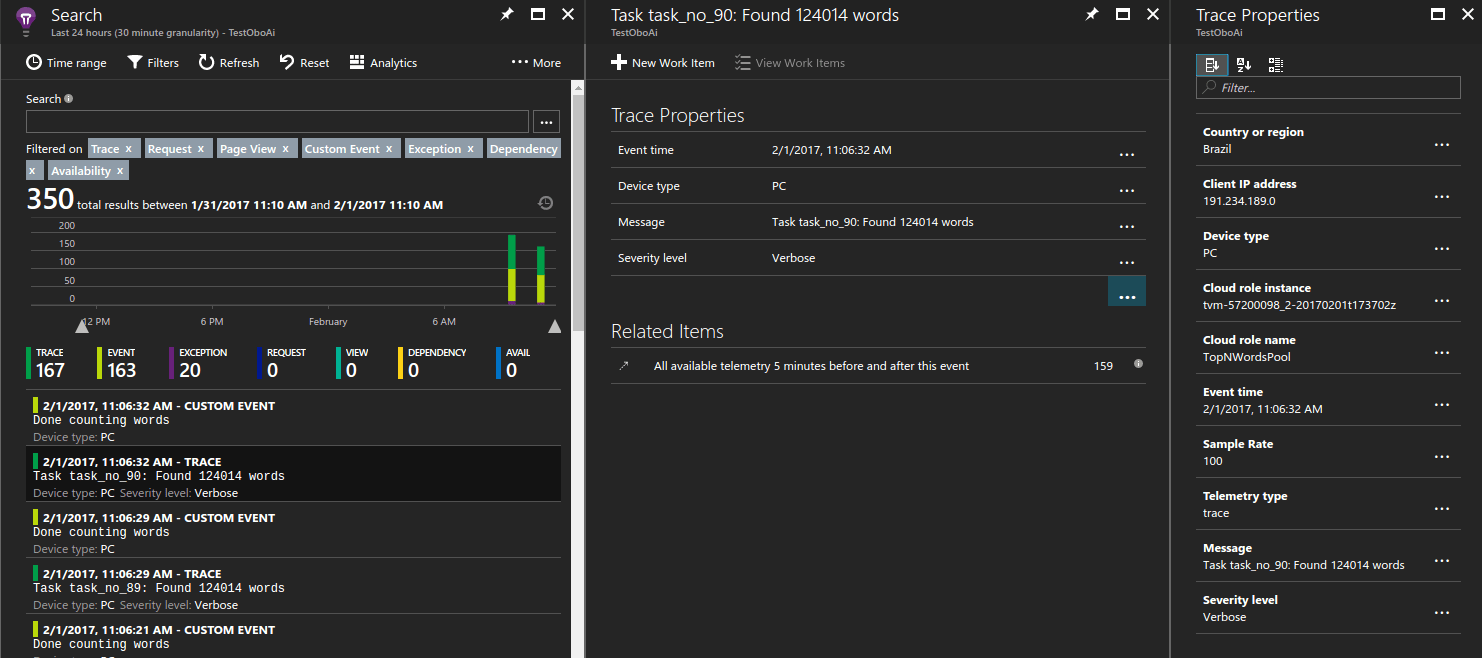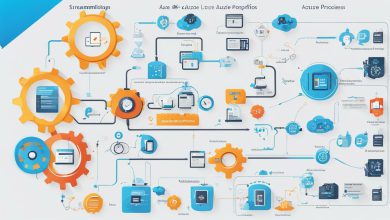
Security breaches are becoming increasingly common and sophisticated, making it more important than ever to invest in effective logging, monitoring, and alert practices. By implementing these practices, organizations can gain valuable insights, resolve issues faster, and prevent breaches more effectively. In this article, we will explore the basics of logging and monitoring, as well as the importance of log management, log analysis, and real-time monitoring. We will also discuss the significance of log alerts, alarm management, and monitoring solutions. Finally, we will share essential best practices and efficient log analysis techniques for optimal security.
Key Takeaways:
- Logging, monitoring, and alerts are essential for optimizing security.
- Effective logging and monitoring practices can help organizations gain valuable insights and prevent breaches.
- To choose the right logging and monitoring tools, organizations should consider scalability, compatibility, and ease of use.
- Continuous improvement, training, and education are critical for effective logging, monitoring, and alert practices.
The Basics of Logging and Monitoring
Modern security threats are complex and constantly evolving, which makes it essential for organizations to have robust logging and monitoring practices in place. Logging is the process of capturing and storing data generated by software and systems, while monitoring is the process of observing and analyzing this data to identify security threats, system errors, and other anomalies.
Effective logging and monitoring practices rely on log management, which involves ensuring the integrity of log data and making it accessible for analysis. Log analysis involves analyzing log data to gain insights, identify patterns, and detect security threats.
Real-time monitoring and log tracking are crucial aspects of logging and monitoring practices, enabling organizations to detect and respond to security incidents as they occur. Log file analysis plays a significant role in identifying potential vulnerabilities and security threats.
Understanding Log Alerts
Log alerts are an important tool for proactive security measures. They enable organizations to be aware of potential security threats in real-time and respond accordingly. Monitoring solutions and effective alert management are crucial components of alert systems.
There are various types of log alerts that can be customized to meet specific security needs. For instance, threshold alerts trigger an alert when a predefined threshold is exceeded. Anomaly alerts notify security personnel when unusual activity is detected. Frequency alerts notify teams when an event occurs repeatedly within a given timeframe.
Alert management is crucial for timely response to security incidents. It involves setting up proper escalation procedures, so alerts are routed to the appropriate personnel. An effective alert management system ensures that alerts are not missed or ignored.
Choosing the Right Logging and Monitoring Tools
Choosing the right logging and monitoring tools is critical to achieving comprehensive security coverage. There are several factors to consider when selecting suitable tools, including scalability, compatibility, and ease of use.
First and foremost, it’s important to consider your organization’s current and future needs. Ensure that the tool you choose can handle your current log management and monitoring requirements, with the ability to scale as your needs grow.
Compatibility is also a key consideration. Make sure that the tool you select can integrate with your existing IT infrastructure and security solutions, minimizing disruption and maximizing efficiency. Additionally, ease of use is essential to ensure quick adoption and effective utilization of the tool.
When evaluating logging and monitoring solutions, consider the level of automation they offer. Automated log analysis and real-time monitoring can help streamline the process and reduce response time, while automated alert response can further enhance security efficiency.
Ultimately, the right logging and monitoring tool should provide comprehensive log management and monitoring capabilities, with the flexibility to adapt to your organization’s evolving security needs.
Best Practices for Effective Logging
Effective logging is an essential security practice that involves capturing and storing relevant log data for analysis and audit purposes. It is a critical component of log management and analysis, which helps identify security threats and vulnerabilities.
To ensure optimal security benefits, below are some best practices for effective logging:
- Capture relevant log data: It is crucial to capture only relevant log data that helps identify security events and incidents. Over-burdening the system with unnecessary log data can lead to a slower analysis process and consume more storage.
- Ensure log integrity: It is important to ensure log data integrity by implementing measures such as digital signatures, checksums, and encrypted transport. This helps prevent tampering or unauthorized changes to the log data.
- Implement proper log storage and archiving practices: Storing and archiving logs in a secure and accessible location is important to ensure log data retention and compliance. It is essential to implement proper retention policies and define appropriate retention periods to avoid overcrowding of storage.
Log analysis is another crucial security practice that helps identify and respond to security incidents and potential vulnerabilities. Effective log analysis involves identifying patterns and anomalies in log data, correlating log data with other security events, and leveraging advanced analytics tools.
By following these best practices for effective logging and log analysis, organizations can enhance their security posture, strengthen incident response capabilities and prevent potential data breaches.
Implementing Robust Monitoring Strategies
When it comes to securing your organization’s systems and data, monitoring is key. By implementing robust monitoring strategies, you can proactively detect and respond to security incidents, ensuring that any potential breaches are minimized in their impact. At the heart of any effective monitoring strategy lies real-time monitoring, which allows you to quickly identify any anomalies or threats as they occur.
One of the most important aspects of monitoring is log monitoring, which involves analyzing log data to identify any suspicious activity. By monitoring your logs in real-time, you can quickly detect any unusual patterns or deviations from normal behavior, allowing you to take appropriate action before any damage is done.
There are a number of different monitoring solutions available, each with their own strengths and weaknesses. By carefully evaluating your needs and selecting the right solution for your organization, you can ensure that you are able to effectively monitor your systems and respond to any incidents that arise.
Efficient Log Analysis Techniques
When it comes to optimizing your security strategy, log analysis is a critical component that can help you identify potential threats before they turn into serious security incidents. However, analyzing logs can be time-consuming and complex, especially if you’re dealing with vast amounts of data.
To streamline your log analysis process, it’s essential to leverage efficient log monitoring tools and techniques. By doing so, you can quickly identify security threats and anomalies and take proactive measures to prevent them from escalating.
Correlating Log Data
One of the most effective log analysis techniques is to correlate log data from different sources to gain deeper insights and identify patterns. By correlating log data, you can identify potential threats that may not be apparent when analyzing individual log files.
For instance, if you notice failed login attempts from a particular IP address, you can cross-reference this with other events, such as port scans or access attempts to critical systems, to identify potential security threats.
Leveraging Advanced Analytics Tools
To make the most of your log data, it’s critical to leverage advanced analytics tools that can help you identify meaningful patterns and trends. With machine learning and AI-based log analysis tools, you can automate much of the analysis process and quickly identify potential security threats.
These tools can analyze vast amounts of data in real-time, helping you identify and respond to potential security incidents proactively. They can also provide automated alerts and insights, highlighting areas that need further investigation.
Streamlining with Log Monitoring and Alerts
Log monitoring and alerts can help streamline your log analysis process by identifying potential security threats automatically. By setting up alerts for specific events or patterns, you can be notified as soon as something suspicious happens, allowing you to take immediate action before it’s too late.
For instance, you can set up alerts for failed login attempts, unusual network traffic, or unauthorized file access, among others. With effective log alerts, you can detect potential security incidents faster and respond proactively.
Finally, log file analysis is a critical component of any security strategy. By leveraging efficient log analysis techniques and tools, you can analyze vast amounts of log data and identify potential security incidents proactively.
Next, we’ll explore the significance of automation in logging, monitoring, and alert management.
Leveraging Automation for Enhanced Security
Automation is an essential element in modern logging, monitoring, and alert management. It enables security teams to respond promptly to security incidents, reduce response time, and enhance security efficiency.
Automated log analysis provides real-time monitoring that can detect when events and anomalies deviate from the expected pattern. Once detected, alerts can be automatically generated, communicated, and escalated if necessary. Real-time monitoring can also leverage automation to identify critical security events and respond by triggering a pre-defined set of actions. Automated alert response reduces the time it takes to respond to security incidents, minimizing the security vulnerabilities and preventing breaches effectively.
Leveraging Real-Time Monitoring
Real-time monitoring is critical in proactive security measures. It provides a real-time view of the network, server logs, application logs, and user activities to detect anomalies and security threats. Automated log analysis provides instant insight into potential issues, enabling security teams to quickly respond to security incidents. Real-time monitoring also facilitates automated alert management and response, enabling teams to take prompt action and minimize the impact of security incidents.
The use of automation in log management, monitoring, and alert management streamlines security operations and provides teams with the ability to scale their efforts effectively. Automation can help organizations stay ahead of evolving security threats by allowing security teams to focus on proactive security measures and continuous improvement.
Integrating Security Incident Response with Logging and Monitoring
Effective security incident response requires a holistic approach that integrates logging, monitoring, and alert management. Real-time monitoring is a key component of this strategy, enabling security teams to detect and respond to security incidents in real-time, thereby reducing the impact of breaches.
Alert management plays a crucial role in incident response, allowing security teams to prioritize and respond to security incidents based on their level of severity. Automated alert response can further streamline the incident response process, enabling security teams to respond to security incidents more quickly and efficiently.
Logging is also an essential component of incident response. By capturing detailed log data, security teams can perform post-incident analysis to identify the root cause of security incidents and develop strategies to prevent them in the future.
Overall, integrating security incident response with logging and monitoring practices is critical for effective security management and rapid incident response.
Continuous Improvement and Adaptation
Effective logging and monitoring practices require continuous improvement and adaptation to keep pace with evolving security threats. Regular review and refinement of log management, log analysis, and monitoring solutions is crucial to enhance the security posture of an organization. Proactive security measures can help prevent security incidents and ensure optimal security coverage.
Continuous improvement and adaptation involve identifying and addressing gaps in logging and monitoring practices. Monitoring solutions need to be updated regularly to capture new security threats and vulnerabilities. Log management practices should be refined to ensure the integrity and relevance of log data. Log analysis techniques must evolve to identify patterns and correlations effectively.
Organizations must prioritize proactive security measures by investing in tools and solutions that offer comprehensive security coverage. Robust log management tools and monitoring solutions can help automate security practices and streamline incident response. Additionally, security awareness training for employees and specialized training for security professionals can help ensure effective logging and monitoring practices.
Continuous learning is essential to stay up-to-date with the latest logging and monitoring techniques. Organizations must prioritize security education and training to keep pace with evolving security threats. Regular review and refinement of logging, monitoring, and alert practices, combined with continuous learning, can help enhance an organization’s security posture.
Training and Education for Effective Logging and Monitoring
Effective logging and monitoring require more than just the right tools and techniques. It also requires skilled security personnel who can use these tools and techniques efficiently and effectively. Therefore, training and education are crucial for any organization that seeks to strengthen its security posture.
Employee security awareness training is a critical first step. Employees must understand the importance of logging and monitoring, know how to identify security threats, and understand their role in keeping the organization secure. Security professionals also require specialized training in log management, log analysis, and monitoring solutions.
Continuous learning is also essential to keep up with the ever-evolving landscape of security threats. New vulnerabilities and attack methods are constantly emerging, and security professionals must stay informed of the latest logging and monitoring techniques to keep their organization secure.
Investing in training and education ensures that your organization has a well-trained team capable of implementing and maintaining effective logging and monitoring practices. By doing so, you can improve your security posture, minimize the risk of security incidents, and remain vigilant against emerging threats.
Conclusion
Logging, monitoring, and alerts are critical components of any effective security strategy. By implementing these practices, organizations can enhance their security posture, gain insights into potential threats, and respond to security incidents in a timely manner.
It is essential to choose the right logging and monitoring tools, implement best practices for effective logging, and leverage automation for enhanced security. Additionally, integrating security incident response with logging and monitoring practices, continuous improvement and adaptation, and training and education are key factors in maintaining a robust security posture.
Remember, the threat landscape is constantly evolving, and organizations must stay vigilant in their efforts to protect themselves from potential threats. By implementing the recommended practices and leveraging appropriate tools and solutions, organizations can ensure that they are well-equipped to detect and respond to security incidents.
Investing in logging, monitoring, and alert practices is an investment in the security and wellbeing of your organization. Don’t wait until it’s too late to take action. Start implementing these practices today and stay ahead of potential security threats.
FAQ
Q: What is the purpose of logging, monitoring, and alerts for security?
A: Logging, monitoring, and alerts are essential practices for enhancing security, gaining insights, resolving issues faster, and preventing breaches effectively.
Q: What is log management and analysis?
A: Log management involves collecting, storing, and analyzing log data for security purposes. Log analysis helps identify security threats and anomalies.
Q: Why is real-time monitoring important?
A: Real-time monitoring allows for immediate detection and response to security incidents, enabling proactive security measures.
Q: How can log alerts be customized?
A: Log alerts can be tailored to specific security needs, ensuring timely notification of potential security incidents.
Q: What factors should be considered when choosing logging and monitoring tools?
A: When selecting logging and monitoring tools, factors such as scalability, compatibility, and ease of use should be taken into account.
Q: What are the best practices for effective logging?
A: Essential best practices for logging include capturing relevant log data, ensuring log integrity, and implementing proper log storage and archiving practices.
Q: How can robust monitoring strategies be implemented?
A: Robust monitoring strategies can be implemented through real-time monitoring and the use of monitoring solutions that detect and respond to security incidents.
Q: What are efficient log analysis techniques?
A: Efficient log analysis techniques involve correlating log data, identifying patterns, and leveraging advanced analytics tools for optimal security.
Q: How can automation enhance security?
A: Automation can improve security by enabling automated log analysis, real-time monitoring, and automated alert response, leading to improved efficiency and reduced response time.
Q: Why is integrating security incident response important?
A: Integrating security incident response with logging and monitoring practices facilitates rapid incident response and minimizes the impact of security breaches.
Q: How can logging, monitoring, and alert practices be continuously improved?
A: Regular review and refinement of log management, log analysis, and monitoring solutions are essential to adapt to evolving security threats and maintain proactive security measures.
Q: What is the role of training and education in effective logging and monitoring?
A: Training and education are crucial for ensuring effective logging, monitoring, and alert practices. Security awareness training for employees and specialized training for security professionals is vital.
Q: What is the importance of continuous learning in logging and monitoring?
A: Continuous learning helps individuals stay up-to-date with the latest logging and monitoring techniques, ensuring they are equipped to tackle evolving security challenges.







